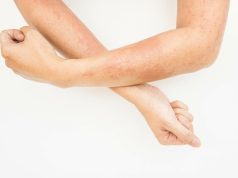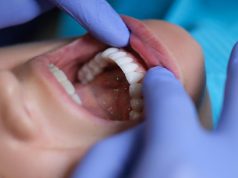Cases appear linked to a species in U.S. lakes, but researchers believe overall risk is very low
THURSDAY, March 5, 2015 (HealthDay News) — The cases of two men who got injured while participating in freshwater activities in Missouri and Texas are giving insight into a freshwater algae that can infect wounds. Reporting in the March 5 issue of the New England Journal of Medicine, the researchers say it’s the first time that the algae — a species common in rivers and lakes called Desmodesmus armatus — has been conclusively linked to wound infections.
Both men were hospitalized for their wounds, and the germ triggered infection of the injured tissue while they were in the hospital. Both men recovered, but not until some of the affected tissue was removed, study senior author Bradley Ford, M.D., Ph.D., director of clinical microbiology at the University of Iowa Hospitals and Clinics in Iowa City, told HealthDay. He stressed, however, that even though the algae is common, “we’re [still] talking about an extremely rare type of infection and it’s extremely unlikely it will ever hurt more people.”
One case involved a healthy 24-year-old man who suffered a deep puncture to his right foot while in a freshwater lake in Texas. The other case involved a healthy 30-year-old man who had a serious accident while jet-skiing in a freshwater lake in Missouri. Both were initially hospitalized for their injuries. Once in the hospital, however, each developed a localized infection. Fungal cultures performed on tissue samples drawn from each patient revealed that both had been infected with the same type of chlorophyll algae — D. armatus.
Both men underwent surgical debridement. Both recovered, although the Missouri patient did subsequently struggle with a related antibiotic-resistant complication one year later, Ford said. “Ultimately both recovered fully, after repeated removal of local tissue,” he said. “There were no amputations or anything dramatic of that kind.” Ford believes the case reports are important for “getting a better handle on algae infections overall and perhaps helping doctors to know what to do when and if they see this type of very, very rare infection.”
Full Text
Copyright © 2015 HealthDay. All rights reserved.








